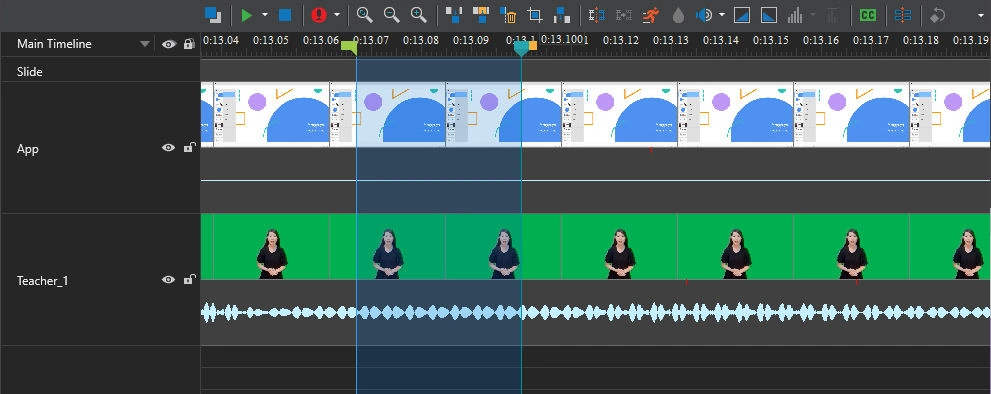Picture this: the familiar glow of a screen captivating your child, not for homework, but for endless entertainment. Sound familiar? Whether you’re a parent navigating the digital landscape or an educator seeking to cut through the noise, capturing kids’ attention in today’s world can feel like an epic quest!
Forget the battles over screen time; what if we could transform those very devices into powerful portals of learning? If you’re ready to ditch the distractions and discover how to make education genuinely thrilling, you’ve landed in the right place.
Get ready to explore three dynamic eLearning resources that can turn screen time into brain-boosting adventures. And speaking of interactive adventures, imagine creating your own engaging educational games and quizzes.
Tools like ActivePresenter, a multifunctional eLearning authoring software that allows you to design interactive lessons, quizzes, and even engaging educational games, empowers you to do just that, transforming learning into a fun and interactive experience your kids will actually look forward to!
Keep reading to unlock the secrets to captivating young minds through the power of eLearning.

eLearning Resource #1 – Short Videos
One of the biggest mistakes that teachers and parents have frequently made in education is to limit kid’s learning experiences in textbooks, school curricula, homework, and assignments. In this digital era, these traditional learning resources are no longer the main source of information. Instead, let’s think about a more interesting replacement – a short video. A short video is an extremely useful eLearning material. It helps not only convey information better but also stir children emotions and attract their attention to the main content. An introductory video at the beginning of the lesson or an illustrated video for a case study is always a better choice than a normal explanation from teachers. Besides, instead of asking children to prepare for the next lesson by reading the next chapters in textbooks, teachers can assign a video to kids and require them to watch it at home. This video functions as a homework. It helps teachers and parents limit the wasted time that children spend on watching other nonsensical videos at home.

Nowadays, it’s so easy to find a video related to your desired subject. Plenty of them are available online in video sites. We can name some famous ones such as YouTube, Vimeo, TED Talks, The Open Video Project, etc. Thanks to this abundance, all things that teachers need to do is just to make sure that the video is in proper length.
With a powerful video editing tool like ActivePresenter, trimming unnecessary parts to make a video short enough and able to convey the highlighted information is just a breeze. Besides, teachers can use ActivePresenter to record a video and edit it in case they cannot find a relevant video online.

eLearning Resource #2 – Podcasts
Some people would argue that reading is the key to success in learning. A child who has good reading skills can study well in many subjects. On the contrary, if a child struggles with reading, he will struggle with learning. I would argue that this opinion is not completely true. As you may not know, we have up to seven types of fundamental learning styles. They are Visual, Auditory, Verbal, Physical, Logical, Social, and Solitary. In fact, many students belong to auditory learning styles. A research shows that these students are able to absorb more information from listening rather than reading. In this case, a podcast can be a better eLearning material to enhance a child’s desire and ability to learn.

Podcasts are usually audio files. They are alternative eLearning resources to video. This pre-recorded audio program allows children to learn on the go and on demand. In detail, children can decide what and when they want to hear. Besides, they can listen to a podcast when they are playing sports, going to school, or doing other things. This provides children options based on their learning preferences, activities, and styles. As a result, they are more engaged and motivated because they’re in the driver’s seat.
There is good news for teachers. Creating a podcast has never been a complicated task at all. All you need is a good microphone and headphones, then you can start creating your own podcast. In ActivePresenter, you can create a podcast by using record narration function. Otherwise, you can also find many interesting podcasts available online.
eLearning Resource #3 – Interactive Games
Most children love to spend their time playing games and using game applications. Therefore, it seems a good idea to leverage interactive games as an elearning material to encourage children’s joy of learning. Interactive games make learning more fun. It can be advantageous in many aspects. It is a great way for teachers and parents to present new knowledge in a way that motivates kids to learn.
Let’s take an example. Animal Names or Fruit Names are educational games created in ActivePresenter. With eye-catching colors, lovely animal images, or images of familiar fruits, these games make learning exciting. By playing these games, children can learn the names of animals or fruits in English through playing crosswords or performing drag-n-drop actions.
Fruit Names Game Created in ActivePresenter
Catch Bubbles is also another educational game created in ActivePresenter. Its format is quite familiar to other popular bubble games that kids really love. However, there is one thing different: the game is created for educational purpose. Therefore, each time children catch a bubble, they need to answer a question related to different subjects. The subject could be maths, history, biology, literature, physics, art, chemistry, or sports. Similarly, other games like Panda Game or Butterfly Lifecycle can help children to learn about nature and science in an exciting way.
Catch Bubbles Game created in ActivePresenter
Ready to design your own learning experiences like the examples above? Download ActivePresenter for free today to develop your own interactive games!

Bottom Line
When it comes to education, many children have undergone the strict control from teachers and parents. They do not have an opportunity to express their likes, dislikes, concerns, and feelings about what’s going on with their education. As a result, they will get bored soon and may withdraw from the learning process in some forms of opposition. Spending time on digital devices and glued to their screen is one of those forms. Therefore, it’s a great idea if teachers and parents can spend some time finding out their kid’s preferred learning styles and preferences. When learning can engage children in areas and subjects of their interest, it becomes a joyful journey.